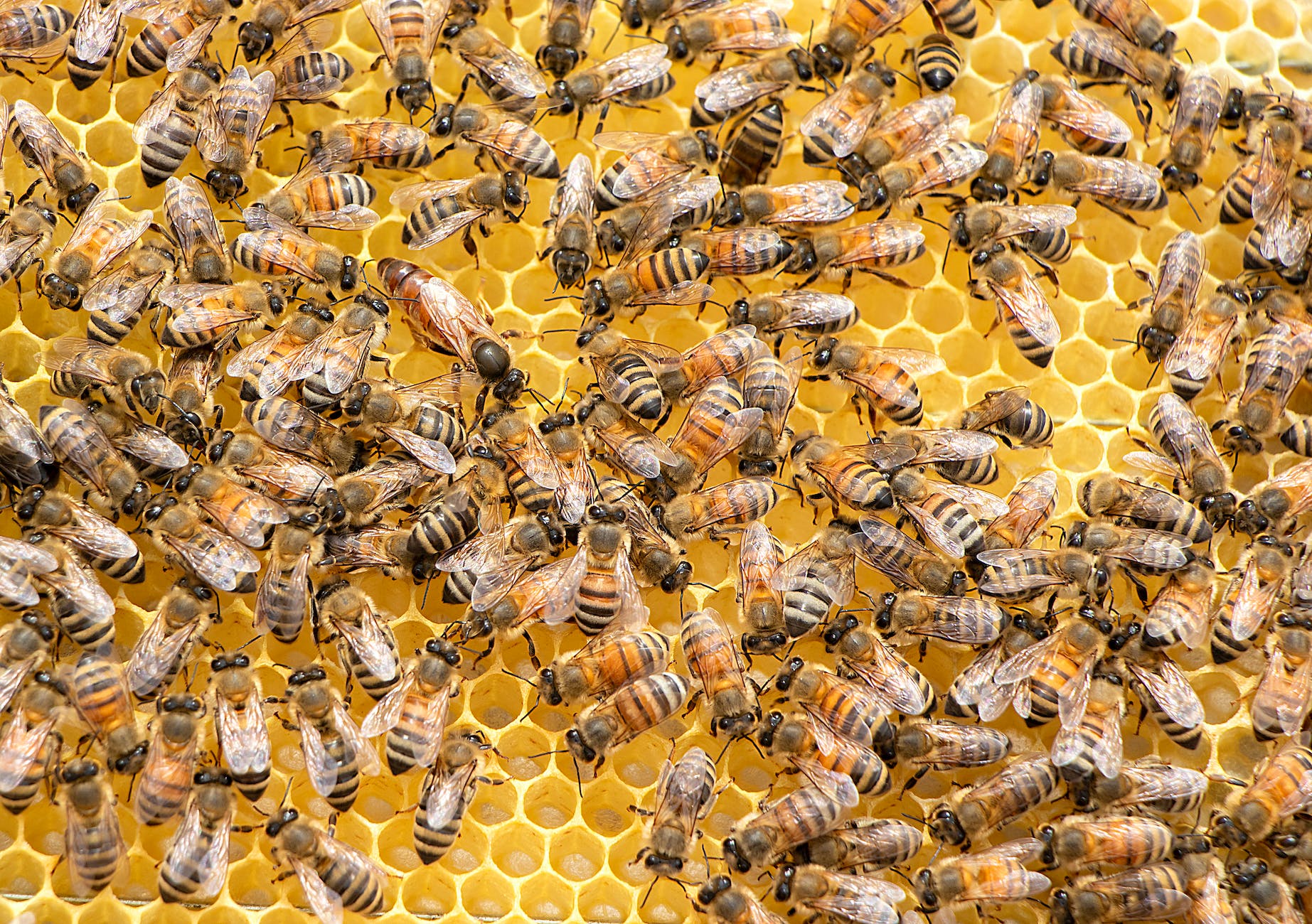Have you ever thought about what a beehive can teach us about society? Well, it turns out that there are a lot of parallels between the way bees live and the way humans live. Throughout history, people have looked to bees as a model for the way society should be. From the ancient Greeks to Shakespeare to Tolstoy, bee symbolism has been a part of our culture.
It’s fascinating to learn about the rich history of bee symbolism and how they have been inspiring humanity for thousands of years.
For a long time, people have been fascinated by the ways bees live and work together in their hives and how they make honey. They also think that bees and honey are linked to good speaking and writing skills. They have used this information to inspire their own ideas and creations.
For example; It’s interesting to know that the Hebrew word for “Bee,” “dbure,” is related to the word “dbr,” which means “speech.” This connection between bees and the power of the spoken or written word has been further reinforced by legends such as the one about Plato, who was said to have had bees settle on his lips when he was a baby, indicating his future brilliance with words.
Another fascinating story is about Sophocles, a famous playwright and poet of ancient Greece , also known as the “Attic Bee” because of his hard work, Virgil, and Saint Ambrose, the patron saint of beekeepers. These stories show us how bees have been associated with wisdom, hard work, and brilliance with words throughout history.
And in Indian texts, bees are also seen as spirits intoxicated with the “Pollen of Knowledge.” This idea further emphasizes the importance of bees as a symbol of knowledge, wisdom, and spirituality.
It’s amazing to see how the bee community, with its qualities of hard work and wisdom, has been inspiring human culture for thousands of years and will continue to do so in the future.
A Model for Human Society

What I also learned that I didn’t know was that the concept of bee society as a model for human society has been around for centuries. The workings of the bee community have inspired and intrigued so many writers and philosophers.
In the past, many writers who observed bees closely, such as Aristotle, drew parallels between bee and human society and found much to admire.
For example, the orderly hard working and cooperation of the bees was seen as a model for commerce, with the hive as a busy shop and the busy bees as trading citizens.
One of the things that makes bee society so fascinating is the way that all the bees work together to make sure the hive thrives. They work together to collect food, build the hive, and care for the young. The bees also have a highly organized system for communicating with each other. When a worker bee finds a food source, she returns to the hive and performs a dance to tell the other bees where the food is.
The idea that bees were model citizens and deserved only the best beekeepers was also popular. The Roman writer Varro claimed that bees “hated the lazy,” while Columella dedicated a chapter of his De re rustica to bee farming, insisting on the importance of honesty in beekeeping.
Bee society has also been used in works of literature, such as in Shakespeare’s Henry V, where the fable of bees is used as a pattern of the commonwealth in times of war.
The concept of bee society as a lesson for young princes was used by Seneca in De Clementia, written for his pupil Nero, and by Thomas Elyot for Edward VI.
Even in more recent times, the idea of bee society as a model for human society has been used, such as by Leo Tolstoy in War and Peace. Tolstoy, a keen beekeeper himself, made a detailed analogy between Moscow, devoid of inhabitants after its capture by Napoleon, and a “queenless hive.”
Discovering the Parallels Between Bee and Human Societies
Have you ever thought about what a beehive can teach us about society? Well, it turns out that there are a lot of parallels between the way bees live and the way humans live. Throughout history, people have looked to bees as a model for the way society should be. From the ancient Greeks to Shakespeare to Tolstoy, bee symbolism has been a part of our culture for thousands of years.
Bee Society could Provide a Blueprint

Bees live in a highly organized society, with each bee having a specific job to do. The queen bee is the mother of all the other bees and is responsible for laying eggs. The worker bees are responsible for collecting food, caring for the young, and maintaining the hive. Finally, the drones are the male bees and their only job is to mate with the queen.
One of the things that makes bee society so fascinating is the way that all the bees work together to make sure the hive thrives. They work together to collect food, build the hive, and care for the young. The bees also have a highly organized system for communicating with each other. When a worker bee finds a food source, she returns to the hive and performs a dance to tell the other bees where the food is.
It’s truly amazing to see how the idea of bee society as a model for human society has been around for so long and has inspired so many.
Just like bees, humans also live in a highly organized society. We have different jobs and roles, and we work together to make sure our communities thrive. Just like the bees, we also have a system for communicating with each other. We use language and technology to share information and make sure that everyone is on the same page.
One of the things that makes human society so fascinating is the way that people from different backgrounds and cultures can come together and work towards a common goal. Just like the bees in a hive, people from all over the world can come together to create something amazing.
There are many other parallels between bee and human societies. For example, just like the queen bee, there are leaders in human society who are responsible for making important decisions. And just like the drones, there are people in our society who don’t have a specific job or role, but who still play an important part in making our communities thrive.
It’s truly fascinating to me to learn about the similarities between bee and human societies. Both are highly organized, with each member having a specific job to do. And both rely on communication and cooperation to thrive.
Whether you’re a beekeeper or just someone who is interested in nature, bee symbolism is a fascinating topic to explore.
So next time you see a beehive, think about what it can teach us about human society. Just like the bees, we can all work together to create something amazing and make the world a better place.

